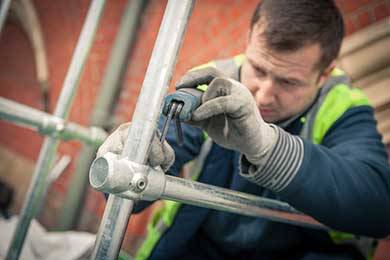 Daniel Betts, ECEX
Daniel Betts, ECEX
When it comes to purpose-built water systems, such as cooling towers, evaporative condensers and water storage tanks, the consequences for Legionellosis caused by legionella bacteria can be catastrophic. But what happens when engineers aren’t able to gain safe access to the equipment which they are required to maintain?
Legionella bacterium is commonly found in natural water systems, but the conditions are rarely such that people contract diseases from them. Where purpose-built water systems are installed and maintained at a high enough temperature to encourage growth (between 20-45°C), outbreaks of illness from exposure to legionella can occur. As such, it is extremely important to control any associated risks through to the introduction of control and maintenance measures that restrict the proliferation of organisms within the water system.
The Health and Safety Executive’s Legionnaires’ disease ACoP suggests recommended practices that can be adopted in order to remain compliant with the Health and Safety at Work etc Act 1974. Prior to the implementation of any processes, a risk assessment should be undertaken and:
“Where the assessment shows that there is a reasonably foreseeable risk of exposure to legionella bacteria, the use of water systems, parts of water systems or systems of work that lead to exposure must be avoided so far as is reasonably practicable. Where this is not reasonably practicable, there should be a written scheme for controlling the risk from exposure that should be properly implemented and managed.” (HSE, 2013)
It is the responsibility of duty holders, employers and those in control of a premises or facility to prepare a scheme to prevent and control the risks through planned preventative maintenance processes (PPMs) and other onsite measures.
For large equipment on site such as cooling towers and water storage tanks, testing of water quality is an essential part of the maintenance and treatment regime; the extent and regularity with which this is undertaken will be determined by the operating characteristics of the water system. Only operatives, service providers or consultants with adequate training should carry out water quality testing, which will enable site managers to routinely monitor the bacterial numbers in order to effectively determine whether the treatment processes have delivered a suitable level of microbiological control.
One consideration that is often neglected whilst implementing such processes is safe access. Though maintenance practices are determined initially from a management level, it is often achieving safe access that presents a challenge to engineers whilst attempting to maintain large water tanks or cooling tower systems. After all, it’s all very well establishing a maintenance regime, but if your engineer can’t safely reach the high level tower components or water tank access hatches, then you will be putting them at risk of injury, negating the purpose of plant maintenance in the first place.
The Work at Height Regulations 2005 (as amended) state that:
“You must ensure that the place where work is done at height (including the means of access) is safe and has features to prevent a fall, unless this would mean that it is not reasonably practicable for the worker to carry out the work safely).”
These regulations apply to all work in which there is a risk of falling which is liable to cause injury. To put this into context, working atop a water storage tank without a sufficient access ladder or means of fall prevention such as guard railing, represents a contravention of the regulations set out by the Health and Safety Executive.
Safe access platforms, ladders, gantries and edge protection are all fundamental components of an onsite maintenance plan. Without establishing a safe route of access across site, you could be putting your engineers at risk of injury through slips, trips and falls. If they are unable to access the building’s plant safely, then they will be unable to effectively maintain it. Without effective maintenance, the building’s plant is at risk of breakdown or in the case of purpose-built water systems, the building’s occupants could be at risk of disease.
Safety starts with your engineers. After all, if they can safely maintain your building, then your building’s occupants will remain healthy too.
Daniel Betts is a surveyor for ECEX, a company with over 20 years’ of experience in providing safe access and metalwork fabrication services in the buildings and facilities management sector.
Approaches to managing the risks associated Musculoskeletal disorders
In this episode of the Safety & Health Podcast, we hear from Matt Birtles, Principal Ergonomics Consultant at HSE’s Science and Research Centre, about the different approaches to managing the risks associated with Musculoskeletal disorders.
Matt, an ergonomics and human factors expert, shares his thoughts on why MSDs are important, the various prevalent rates across the UK, what you can do within your own organisation and the Risk Management process surrounding MSD’s.

 Daniel Betts, ECEX
Daniel Betts, ECEX
